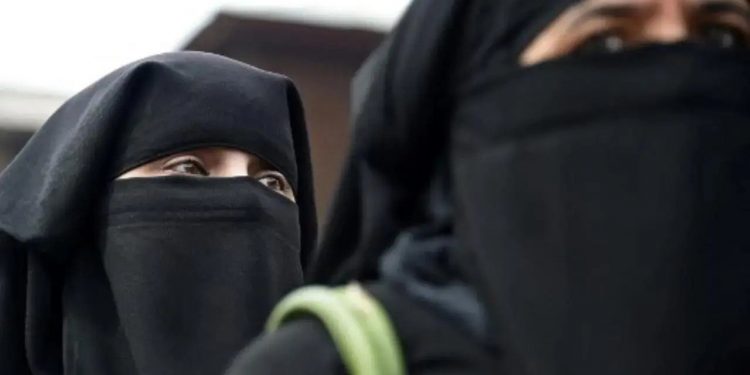Finally, the Taliban have shown their true colours so far as their perverse conception of women is concerned. Suffice it to say, their world view dates back to an age when women were regarded as chattel, the personal property of the male folk, their fit place was the home and their movement for the most part of the day was from bedroom to kitchen. There is no other way to describe the regime’s latest diktat issued 7 May when they announced that an all-covering head-to-toe burqa will be mandatory in public for women in Afghanistan. This is an archaic and blunt addition to a set of curbs the Islamist group has imposed on women’s rights in nine months since returning to power in August, 2021.
The reclusive Taliban chief Hibatullah Akhundzada issued the decree enjoining on all Afghan women to strictly comply with it, according to the Ministry for the Propagation of Virtue and the Prevention of Vice. Sharing the details at a news conference in Kabul, the ministry said in a statement that a woman’s male “guardian,” such as her father, brother or husband, would receive a warning before being imprisoned for three days if the woman did not cover her face outside the home. It said the guardian would eventually be taken to a court for a stricter punishment if the decree is still violated. Female government employees would be summarily dismissed from jobs if they do not cover their faces, and male employees would face suspensions from jobs if female members of their families are found guilty of breaching the edict.
The statement described a burqa as the best type of hijab, which in Arabic means “cover” and said it is “part of Afghan culture and it has been used for ages.” It added that another preferred type of women’s hijab is a long black veil and dress that should not be “thin or tight.” This reeks of a mediaeval mindset, especially, as many Moslem countries do not consider mandatory wearing of burqa as part of any religious injunction. Most women in deeply conservative Afghanistan wear a headscarf for religious and cultural reasons, but many in urban areas, such as Kabul, do not even cover their faces. The Taliban’s fatwa means infringement on the freedom of 50 per cent of the country’s estimated 40 million people.
Not surprisingly, the United Nations Assistance Mission in Afghanistan expressed deep concern over the development and said the decision contradicts numerous assurances regarding respect for and protection of all Afghans’ human rights, including those of women and girls, that had been provided to the international community by Taliban representatives during discussions and negotiations before they took over the country. The mission has decided to immediately request meetings with Taliban authorities to seek clarification on the status of the order which is nothing but a calibrated measure to confine Afghan women within their home, bereft of school education and eventually without the means of livelihood. Only six weeks back the Taliban had reneged on their promise of reopening secondary schools. When girls all over Afghanistan were bubbling with enthusiasm that they would at last continue to receive school education, the regime suddenly postponed secondary schooling for Afghan girls. The decision has been widely condemned by the international community. The decision on mandatory wearing of burqa is a terrible blow to Afghan women aspiring for liberal pursuits and expansion of their mental horizons.
The US special envoy for Afghan women and girls, Rina Amiri, said the latest restriction leaves no one in doubt that the Taliban continue to adopt policies oppressing women and girls as a substitute for addressing the economic crisis and need for inclusive governance in the country. She issued an appeal to the Taliban authorities urging them to end these regressive measures, reopen girls’ schools and let women work and resume their lives. This regime is so retrograde that it has already banned women from undertaking long road trips without a close male relative and ordered taxi drivers to refuse to accept female passengers not wearing an Islamic hijab. Men and women are also banned from visiting parks at same time.
The international community, joined by Islamic nations and Moslem scholars, has been pressing the Taliban to end restrictions on women to uphold their repeated pledges that they would respect human rights of all Afghans. It appears the Taliban’s apparent goal is to erase women and girls entirely from public life and make them wards and property of their male relatives with no independence. Borge Brende, the president of the World Economic Forum, lamented in a statement that the Taliban’s burqa restriction comes on top of banning women from many government jobs and girls from secondary education.
There are two takeaways from the Talibanization of Afghanistan for India. First, the extreme poverty and the terrible economic situation in Afghanistan is being covered in the sand by the Taliban with religion as the only narrative, very similar to what is being done to India at the present juncture. Second, the burqa or hijab representing a way for oppression of women by the Taliban is being celebrated in India by the Moslem community seniors through young women who supposedly are asserting their religious ‘rights’ against fundamental Hindoos. In the 21st century, any government which uses religion for governance and suppresses women under different pretexts should be viewed with extreme caution.






































